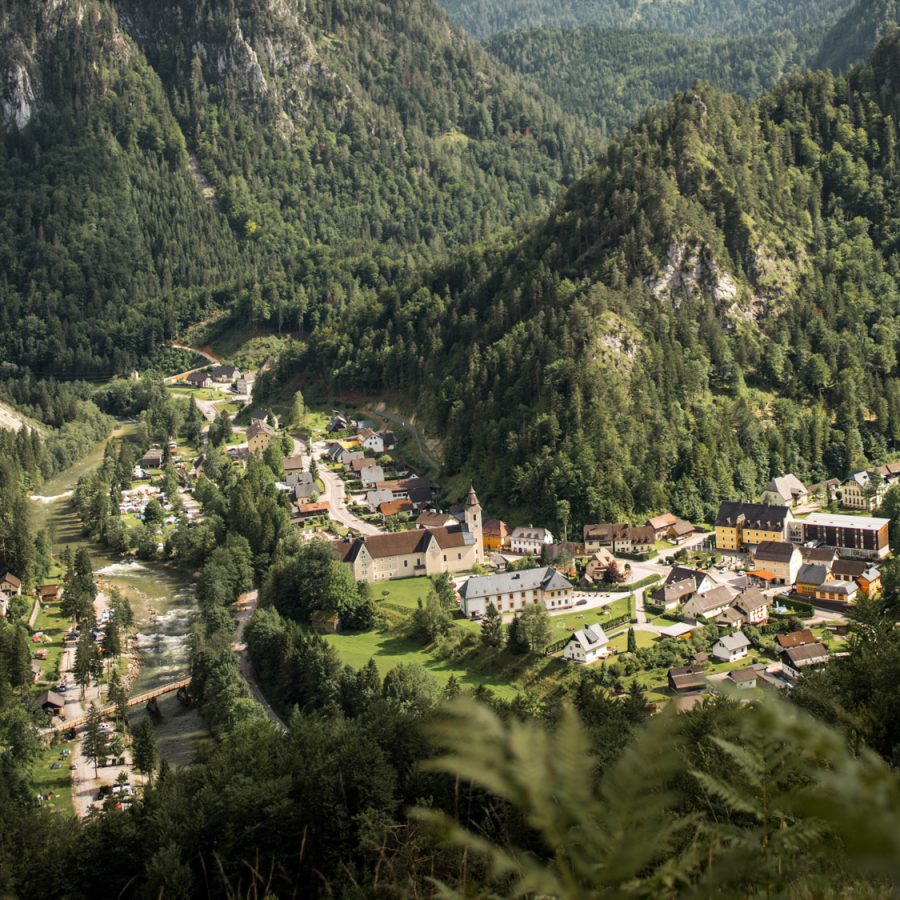Nature Park Community
Wildalpen
Municipal Authority of Wildalpen
A-8924 Wildalpen 91
+43 (0) 3636 621
Area: 202.82 km2
Population: 479 inhabitants
Economy/leading companies: Summer tourism, Stadt Wien – Wiener Wasser (Water supply of the City of Vienna), Österreichische Bundesforste (Austrian Federal Forests), Wildalpen Wasserverwertungs GmbH
History:
In 1074, Archbishop Gebhard of Salzburg established the Benedictine Abbey of Admont which he donated many properties to – including the territory of Wildalpen. The first reference to Wildalpen, and therefore a particularly important document for the community, is Archbishop Konrad I’s diploma to Admont Abbey that was dated October 10th, 1139.
Due to its proximity to iron ore, iron processing and charcoal production dominated Wildalpen from the early 16th century to the 19th century. This lead to an economic upswing which came to an end when hard coal was discovered. From this point on, most jobs were in forestry and timber rafting. In the 20th century, the region’s main activity focused on the construction and expansion of the Second Vienna Mountain Spring Pipeline. Even today, the City of Vienna is one of Wildalpen’s most important employers.
Geography:
Wildalpen is located in the heart of the Salza valley at the foot of the northern Hochschwab mountain. The mountain resort is marked by the Salza river and its tributary, the Lassing river, especially. After the so-called Wildalpen rockslide (from 5900 and 5700 years ago) which went down from Gr. Grießstein (2023 m) to Ebenstein (2123 m) to Brandstein (2003 m), the remaining sturzstrom sediments and sediments lead to a dramatic change of the landscape around the village centre. The community’s borders are the Göstlinger Alps and the Kräuterin in the north, and the foothills of the Eisenerz Alps in the south bordering the district of Hinterwildalpen.
What makes this Nature Park community so special?
Wildalpen and the Salza valley are popular with white-water sportsmen. In summer, sports like rafting, kayaking or riverbug are very popular. It is also the perfect place for hiking or taking a break from the hustle and bustle. You can go cycling and mountain biking, play tennis, football, go fishing in the Salza river or go for a swim in an outdoor pool. In the event of bad weather, we recommend a visit to the SpringWater Museum, the Forest Sauna and take a guided tour of the Arzberg cave. In winter, our guests are welcome to take part in our traditional sports or relaxing activities (e.g. the Glöckler run in January), there are cross-country skiing trails, curling, a ski lift for children and a T-bar lift; you can even go snowshoeing or on a horse-drawn sleigh ride.









